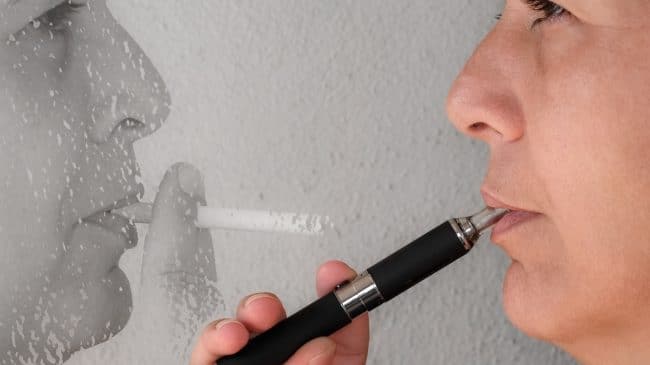Federal Updates
The Food and Drug Administration issued Advanced Notice of Proposed Rule Making (ANPRM) on a proposed nicotine standard that would, in theory, reduce levels of nicotine in combustible cigarettes to minimally addictive or non-addictive levels. “Today’s ANPRM is a significant step in our efforts to confront nicotine addiction in combustible cigarettes,” said FDA Commissioner Scott Gottlieb in a statement on March 15.
Seriou doubts have been raised about the feasibility of such a standard and the possible unintended consequences that might follow from such large intervention. Harm Reduction Policy Director at the R Street Institute Carrie Wade and public health expert Clive Bates have both voiced concerns over the policy.
A host of center-right organizations signed a coalition letter urging Congressional leadership and the appropriations committee chairmen to include Cole-Bishop language in the FY18 omnibus. The Cole-Bishop Amendment to the current FY18 Agriculture Bill would modernize the FDA’s Deeming Rule by changing the predicate date.
Reason’s Guy Bentley wrote for The Washington Examiner urging lawmakers to consider the merits of changing the predicate date to ensure that 99% of vapor products currently available are not removed from the market by 2022.
Former New York City Mayor Michael Bloomberg announced that Bloomberg Philanthropies will be providing $20 million to fund the launch of Stopping Tobacco Products and Organizations, a new global watchdog that claims it will monitor attempts by the tobacco industry to undermine public health. The announcement was made the 17th World Conference on Tobacco or Health in Cape Town.
State Updates
The Washington State Legislature failed to pass a bill that would have raised the age of purchase for both tobacco and vapor products to 21.
Legislation to raise the tobacco age to 21 also fell short in West Virginia with neither the Senate or House bills making it out of committee.
Reason’s Guy Bentley submitted testimony to the Rhode Island Senate Committee on Health and Human Services regarding Bill 2228, which would define vaping as smoking. Bentley argued the bill would confuse the public and undermine efforts to reduce tobacco-related harms by conflating the risks of vaping with those of smoking.
Minnesota lawmakers introduced a bill in the Minnesota House to raise the age of purchase for tobacco products to 21.
Science and Harm Reduction
A study conducted by Pinney Associates found a majority of people incorrectly believe nicotine is the primary ingredient that causes cancer among smokers. According to the study, smokers are three times more likely than vapers to believe nicotine is a key cause of cancer at 52.5 percent and 14.6 percent respectively. Less than a third of smokers agreed e-cigarettes are less harmful than combustible cigarettes.
A new study published in PLOS claims e-cigarette use presents a net harm at the population level. The authors acknowledged several limitations to their paper such as assuming a gateway effect from vaping to smoking, ignoring the potential of e-cigarette use to decrease the number of cigarettes smoked per day and not considering the potential benefit of e-cigarette use to former smokers who may have relapsed.
Commenting on the study, Professor Peter Hajek, Director of the Tobacco Dependence Research Unit at Queen Mary University of London, said: “This new ‘finding’ is based on the bizarre assumption that for every one smoker who uses e-cigs to quit, 80 non-smokers will try e-cigs and take up smoking. It flies in the face of available evidence but it is also mathematically impossible.”
Regulation
The Centers for Disease Control and Prevention (CDC) released data showing that middle and high-school students who use e-cigarettes were more likely to have seen e-cigarette advertisements than nonusers. Based on these findings the CDC argues there needs to be a raft of new regulations to clamp down on e-cigarette advertising. But the CDCs own data suggest that vaping is reducing smoking among middle and high school students, so restricting advertising could be expected to result in more smoking.
Taxation
The State of New Jersey is considering a wholesale sales tax on e-cigarettes of 75%, seven percentage points higher than the proposed tax on combustible cigarettes. Cigars, cigarillos, and snuff will also be hit with higher taxes.
Quotable Quotes
“A year-old fatally-flawed student project, which has been misinterpreted as showing vaping causes heart attack risk, has recently been resurrected by — who else? — Stanton Glantz” — Carl V. Phillips, Daily Vaper.
What’s Coming Up
The annual E-Cigarette Summit USA will be held in Washington, D.C. on April 30. The program is available and registration is open.
The fifth Global Forum on Nicotine will be held in Warsaw, Poland from 14-16 of June. Registration is now open.
Additional Resources
Comment to FDA on Modified Risk Tobacco Product Application
The Proposed Tobacco Product Standard for NNN Level in Smokeless Tobacco Should Be Withdrawn
The World Health Organization’s Opposition to Tobacco Harm Reduction: A Threat to Public Health?
The Vapor Revolution: How Bottom-Up Innovation Is Saving Lives
Reason’s Research and Analysis of Nicotine and Vapor Issues
Sign up for the Harm Reduction Newsletter

